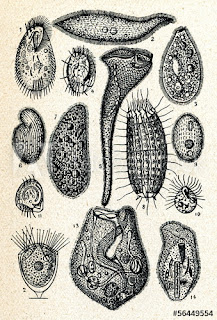Lower non concordats
The main protozoan was given by Goldfuss in 1818. He used the name of protozoa for the lower groups of zoophyte including protozoans, sponges, coelenterates, rototillers and bryozoans. Von siebold in 1845
first used and defined the name protozoa in the present sense, and defined the name protozoa in the present sense, and recognizing the unicellular nature of the protozoa. protozoa are small animalcules generally visible under a microscope.......................
These are found in fresh water,marine water and damp soil, while some are parasitic, symbiotic and commensurable. in the encysted condition, they are found in the air too.
protozoa forms a heterogeneous groups, the members display an extreme diversity of structure, various involvements the structure of many protozoa are extremely complicated. they exist either single or in colonies which differ from a metastasize in having all the individuals a like except when engaged in reproductive activities. A colony has several individuals either attached to each other or enclosed within a gelatinous envelope and joined together by protoplasmic connects.
a Protozoa may be defined as the mass of protoplasmic business not divided into cell and read all about Victor activities such as reading digestion desperation locomotion acceleration reproduction etc does they have protoplasmic level of organisation some protozoan are close to the plant and may be considered as connecting link between plant and animal distributing of these free living aquatic protozoan more worry less limited by the amount of organic are and inorganic materials at quality oxo oxygen dissolved in water food largely the distribution of Protozoa for example hole of radius and light is easily available and holiday for in places where 3 is located on Scheduled Areas..












No comments:
Post a Comment